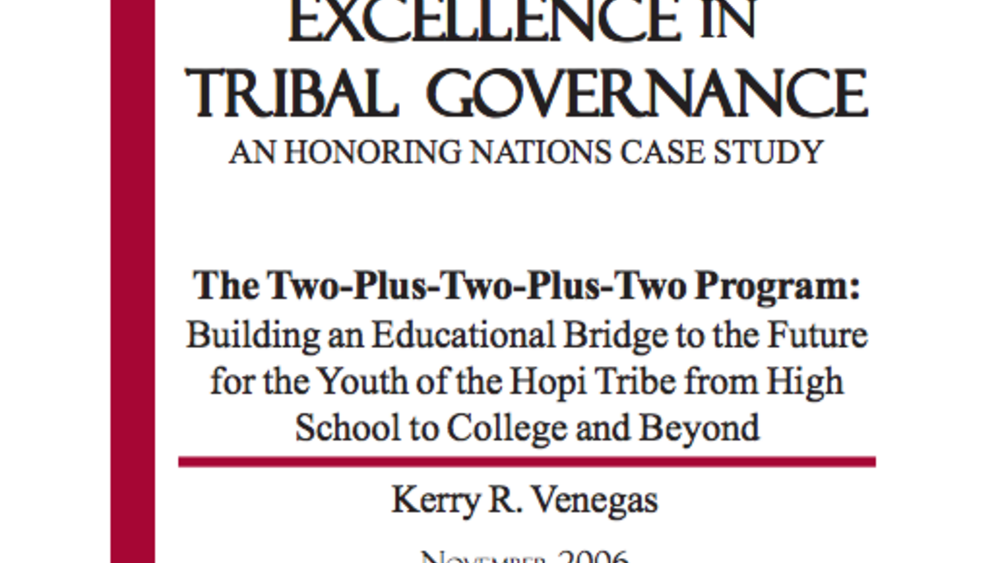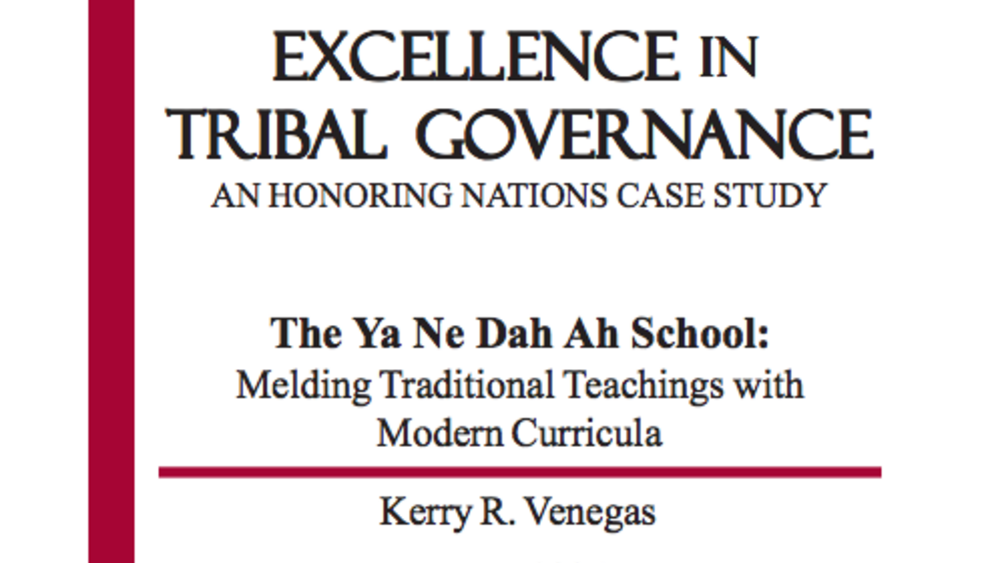Indigenous Governance Database
Kerry R. Venegas
Thumbnail or cover image

The Two-Plus-Two-Plus-Two Program: Building an Educational Bridge to the Future for the Youth of the Hopi Tribe from High School to College and Beyond
Over the last 30 years, Native nations across North America have been taking control of their educational systems in the belief that American Indian “self-determination and local control [are] means of cultural preservation and growth.” Disturbed by the low achievement scores…
Thumbnail or cover image

The Ya Ne Dah Ah School (Chickaloon): Melding Traditional Teachings with Modern Curricula
For many generations, education in American Indian/Alaskan Native (AI/AN) communities has been controlled by sources external to the communities and the people themselves. Large bureaucratic agencies, such as the Bureau of Indian Affairs (BIA) or public school systems overseen…
